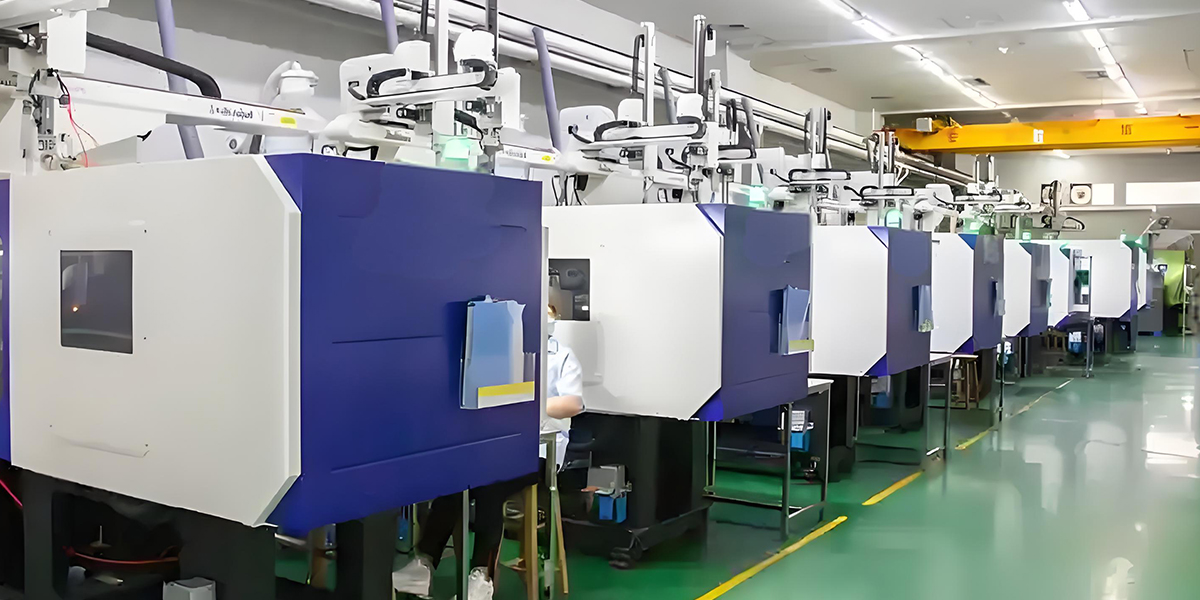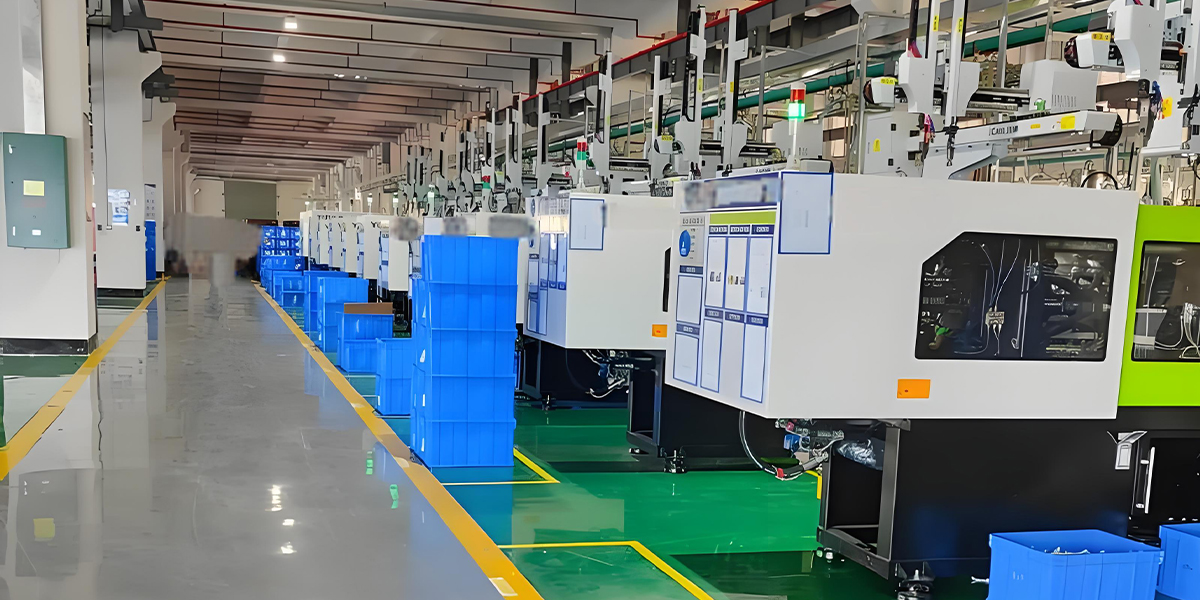Mold Production Tracking & Management
Streamlined processes for efficient injection molding manufacturing, ensuring quality and timely delivery through structured problem resolution and change management.
Comprehensive Production Oversight in Injection Molding Manufacturing
Effective mold production tracking is critical to maintaining efficiency and quality in injection molding manufacturing. The following guidelines establish clear protocols for addressing design issues at various stages of production, ensuring rapid response and minimal disruption to manufacturing schedules.
In the complex landscape of injection molding manufacturing, issues can arise at any stage from design to production. A well-structured approach to problem resolution ensures that these issues are addressed promptly, with clear lines of communication and responsibility. This structured methodology not only maintains production timelines but also upholds the high standards required in injection molding manufacturing.
The following procedures outline the specific responsibilities and communication channels for addressing design problems during CNC programming, manufacturing, and after mold testing, as well as the classification and management of design changes in injection molding manufacturing.
Problem Resolution Process Flow

CNC Programming Stage
Design issue identification and resolution during programming
Manufacturing Stage
Problem handling during actual production process
Testing Stage
Addressing design flaws identified after mold testing
Figure 1: Three key stages in mold production where design issues may be identified in injection molding manufacturing
Issue Resolution Procedures in Injection Molding Manufacturing
CNC Programming Stage Issues
During the CNC programming phase of injection molding manufacturing, if mold design issues are identified, a specific protocol must be followed to ensure timely resolution without disrupting production schedules. The CNC supervisor bears primary responsibility for initiating this process upon discovering any design-related problems.
The first action must be immediate notification to the mold 3D design supervisor. This prompt communication is vital in injection molding manufacturing to minimize production delays. Upon receiving notification, the mold 3D design supervisor must promptly assign the necessary design modifications to the appropriate design personnel.
Once modifications are completed, the revised mold information must be distributed to both the 2D design team and the CNC programming group. This ensures all relevant parties in the injection molding manufacturing process have the updated specifications, preventing discrepancies and rework.
Responsible Parties
- CNC Supervisor (Issue Identification)
- Mold 3D Design Supervisor (Coordination)
- Design Personnel (Modifications)
- 2D Design Team (Documentation Updates)
- CNC Programming Group (Implementation)
Timeline Expectations
- Immediate notification upon discovery
- Assignment within 1 business hour
- Modifications completed based on complexity
- Distribution to teams within 1 hour of completion
Manufacturing Stage Issues
When design issues emerge during the actual mold production phase of injection molding manufacturing, a different protocol applies, reflecting the more advanced stage of production and the potentially greater impact on timelines. In these cases, the mold manufacturing supervisor assumes primary responsibility for identifying and reporting issues.
The manufacturing supervisor must immediately notify the mold design manager, who then escalates the issue to the 3D design team leader. This structured chain of command ensures proper prioritization and resource allocation in injection molding manufacturing environments where multiple projects may be underway simultaneously.
The 3D design team leader is then responsible for assigning the necessary modifications to design personnel. These designers must update the 3D mold design accordingly and generate the appropriate mold modification documentation.
Critical to maintaining efficiency in injection molding manufacturing, this updated information must be promptly communicated to both the 2D design team for documentation updates and the CNC programming group to ensure manufacturing instructions reflect the revised design specifications.

Figure 2: Manufacturing floor in injection molding manufacturing where production issues may be identified
Post-Testing Stage Issues
After mold testing, any identified design flaws require a distinct approach in injection molding manufacturing, as these issues directly impact the final product quality and performance. The product engineering department supervisor takes primary responsibility for identifying and reporting these post-testing design deficiencies.
The product engineering supervisor must promptly notify the mold design manager, who then communicates the issues to the 3D design team leader. This chain ensures that design modifications address the specific performance issues identified during testing.
In injection molding manufacturing, the 3D design team leader assigns designers to address the identified flaws, updating the 3D models accordingly. Comprehensive modification documentation must be generated to capture all changes made to address the testing issues.
Finally, this documentation must be distributed to the 2D design team for updated technical drawings and to the CNC programming group to ensure any necessary rework or adjustments to the manufacturing process incorporate the design changes. This final step closes the loop in the injection molding manufacturing process, ensuring that tested and validated designs are properly implemented.
Importance of Rapid Response
Given that mold production is an ongoing process in injection molding manufacturing, all design changes must be implemented with maximum efficiency to avoid schedule delays. Timely communication and rapid implementation are critical factors in maintaining productivity and meeting delivery deadlines. In injection molding manufacturing, even minor delays can have cascading effects on production schedules, customer commitments, and overall operational efficiency. Therefore, the established protocols emphasize speed without compromising quality or accuracy in the modification process.
Classification of Mold Design Changes in Injection Molding Manufacturing
In injection molding manufacturing, design changes can be categorized into distinct types based on their origin and purpose. Proper classification helps in determining the appropriate handling process, approval requirements, and documentation needs. Each category represents a different scenario requiring specific considerations in the injection molding manufacturing workflow.
1. Mold Design Improvement
These modifications involve adjustments to the mold structure based on manufacturing requirements or product enhancement needs in injection molding manufacturing. They are proactive changes aimed at improving performance, reducing costs, or enhancing manufacturability.
Examples include modifying cooling channel designs for better temperature control in injection molding manufacturing, adjusting ejection mechanisms for improved part release, or optimizing wall thicknesses to enhance mold durability without affecting part quality.
2. Mold Design Error Correction
These changes address structural不合理ities in the original design that could compromise functionality, quality, or manufacturability in injection molding manufacturing. They correct oversights or miscalculations in the initial design phase.
Common examples include correcting draft angles that are insufficient for proper part ejection in injection molding manufacturing, fixing incorrect dimensional tolerances, or resolving structural weaknesses that could lead to mold failure during production.
3. Processing Error Correction
These modifications result from mistakes or inaccuracies in the manufacturing process rather than inherent design flaws. They represent adjustments needed to compensate for errors made during production in injection molding manufacturing.
These might include modifying certain features to accommodate incorrect machining dimensions, adjusting mating surfaces due to improper fitting, or altering mold components to account for material discrepancies encountered during injection molding manufacturing.
4. Customer-Initiated Changes
These modifications stem from revised requirements or preferences expressed by the customer regarding the plastic part's form, function, or appearance. They represent a response to external requirements in injection molding manufacturing.
Such changes might involve altering part geometry, adjusting texture finishes, modifying undercuts, or accommodating new functional requirements specified by the customer. In injection molding manufacturing, these changes often require careful evaluation to assess their feasibility and impact on production.
Distribution of Change Types in Injection Molding Manufacturing
Figure 3: Typical distribution of mold modification types in injection molding manufacturing operations
Documentation and Management of Changes in Injection Molding Manufacturing
In injection molding manufacturing, modification documentation and design data must undergo the same rigorous review and control processes as the original design documentation. This ensures that all changes are properly authorized, documented, and communicated throughout the production chain.
Effective management of design changes in injection molding manufacturing requires a structured approach to documentation that includes:
- Comprehensive change descriptions detailing what was modified in the injection molding manufacturing design
- Clear rationale explaining why the change was necessary in the context of injection molding manufacturing requirements
- Impact assessment outlining how the change affects other aspects of the injection molding manufacturing process
- Approval signatures from all relevant stakeholders in the injection molding manufacturing workflow
- Revision history tracking all modifications made to the design throughout the injection molding manufacturing process
- Distribution records documenting who received the modified information in the injection molding manufacturing team
Implementing these documentation practices in injection molding manufacturing ensures traceability, accountability, and clarity throughout the design and production process. It minimizes the risk of miscommunication, reduces errors, and maintains the integrity of the manufacturing process even as changes are implemented.
Change Control Process
Figure 4: Formal change control documentation in injection molding manufacturing
Key Benefits:
- • Maintains design integrity
- • Ensures traceability
- • Facilitates communication
- • Reduces production errors
- • Supports quality assurance
Ensuring Excellence in Injection Molding Manufacturing
The structured approach to handling design issues and modifications outlined above forms the backbone of quality assurance in injection molding manufacturing. By establishing clear communication channels, defining responsibilities, and maintaining rigorous documentation standards, manufacturers can ensure that even as changes become necessary, the production process remains efficient, timely, and focused on delivering high-quality results.
In the dynamic field of injection molding manufacturing, adaptability is key to success. The procedures detailed here provide the framework for that adaptability, ensuring that changes are managed effectively rather than disrupting production. This systematic approach ultimately leads to better products, more efficient processes, and higher customer satisfaction in injection molding manufacturing operations.
Learn more